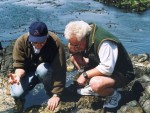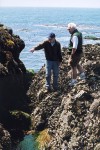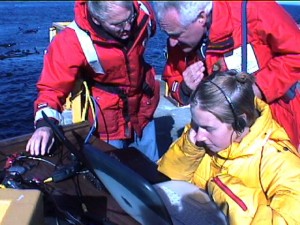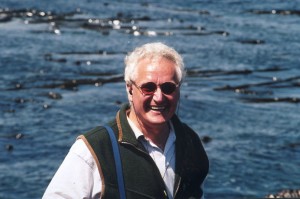 On Saturday May 26, 2001, we hosted at Race Rocks Paul Kennedy, the host of the CBC program “Ideas” (9:00 PM nightly Mon-Fri. ) .
On Saturday May 26, 2001, we hosted at Race Rocks Paul Kennedy, the host of the CBC program “Ideas” (9:00 PM nightly Mon-Fri. ) .
Paul was on the West Coast that week preparing a special series on Canada’s oceans and marine issues. See Paul’s OCEAN JOURNAL entry for May 26 for an account of his trip to Race Rocks.
OCEANS EXPLORATIONS: LEARNING FROM OUR OCEANS is a project which will result in eight hours of programming on IDEAS in December 2001. Paul will spend much of the next seven months on each of Canada’s three ocean coasts. He’ll be on board fishing dorys, Haida canoes, off-shore oil rigs, and snowmobiles crossing Arctic ice. By talking with Canadians who live and work on the sea, he’ll begin to learn about many of the things that the oceans can teach us.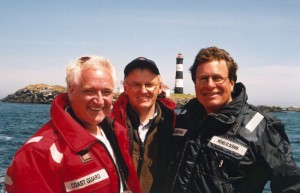
Paul was accompanied by Garry Fletcher and Angus Matthews of Lester B. Pearson College, and Mark Pakenham, of Ocean’s and Fisheries It was a great day to be on Race Rocks as we were in there in the middle of the Swift Sure Sailboat Race, so the vessels kept making close passes through the islands of Race Rocks MPA . Photos by Angus Matthews.
- Paul contemplating the potentials of marine algae.
- Garry and Paul examining a tidepool
- A view of the elephant seals and sea lions
- The Surge channel at low tide. The clumps of gooseneck barnacles present an awesome spectacle.
- Paul talks with Carol Slater about the experience of living on the island as a Guardian of Race Rocks.
Paul returned in the Fall of 2001 to do a webcast with the students.


